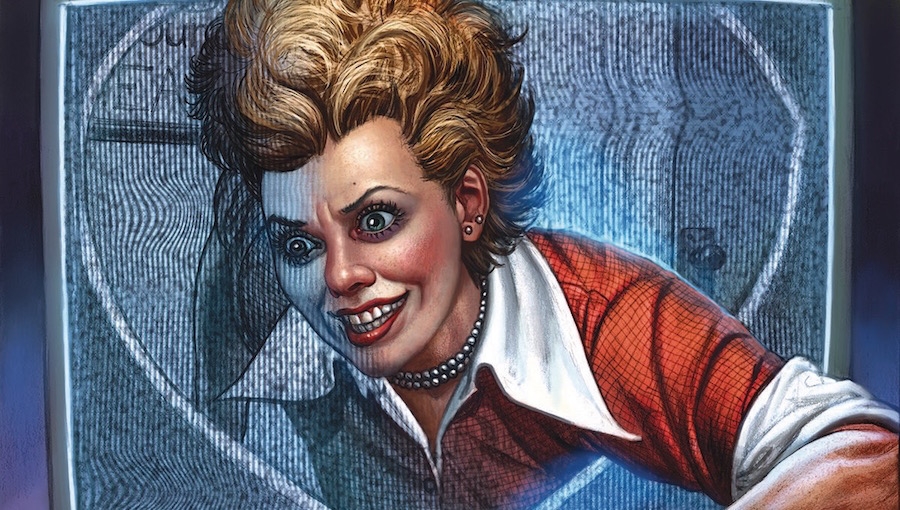Issue #7 opens with a beautifully eerie, noir moment of headlights gradually approaching through the darkness. The brightness pops out of the dark surroundings but still distorts our ability to see anything clearly. Neil Gaiman is a narrative master of distorting fantasy and reality (The main character’s name is Shadow, after all.), and Scott Hampton’s illustrations perfectly capture that technique. In this series, we never really know whether we can trust what we see, especially with the frequent re-occurrence of magical illusions, ghosts, and gods.
As Shadow’s journey continues, we get to see some American geography. The wilderness is rather dreary, as Hampton’s palette perfectly continues to portray an atmosphere that always seems on the verge of a storm bursting through. The talking raven is a great addition to a gothic scene and the perfect specimen to guide Shadow to his next destination in his travels.
Shadow’s dream sequence is another wonderful foray into the strange depths of fantasy. The white flames may intend to be illuminating, but Shadow is unable to get any answers or information from the creature. The scene arouses more anticipation for the “storm” that is coming (A literal storm? A magical storm? Or is this a metaphor?), and we are left feeling as clueless about it as Shadow but eager to continue the journey.
Girl-Sam is a welcome and refreshing addition to the ride. She’s an innocent artist and rather trusting. I love Shadow’s generosity toward her, especially with rigging his coin toss. I think he is happy to have a companion who is friendly and creative, especially in contrast to the dark and bizarre individuals he has met elsewhere. While the pace of the narrative slows down for their conversation, Shadow deserves such a break. And Sam turns out to be a great storyteller, continuing our mythology education. Her tale sends a message: Don’t try to pull a fast one over the gods. Perhaps this is good advice for Shadow, though he seems to be going along with everything he has faced so far. His agenda isn’t driven by greed or personal desires. I think Shadow wants to understand the world and find his purpose in it. He doesn’t have much to hold onto, so this journey gives him an opportunity to develop and learn about himself—even though he may be serving some mysterious gods along the way. Sam gives Shadow the reassurance that he is “cool” and good company. Both appreciate one another, which suggests hope for humanity to remain civil and respectful.
The Lucy sequence is bizarre and creepy, and when I watch I Love Lucy reruns in the future, I will fear of a moment from The Ring that we see on Glenn Fabry and Adam Brown’s cover! It’s an instance when fantasy intrudes on reality, which is common in this series and especially disturbing here. I love that Hampton kept Lucy in black and white during her conversation with Shadow, because it reminds us that she is a projection of the gods but not even in complete human (or animal) form because she retains her 1950s TV coloring. The obscurity continues, the light and dark come together, and we still aren’t really sure what it all means!

